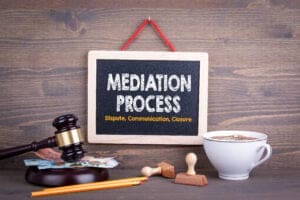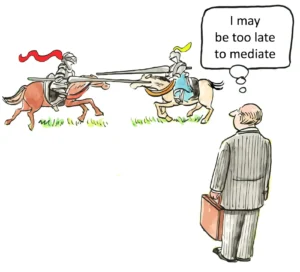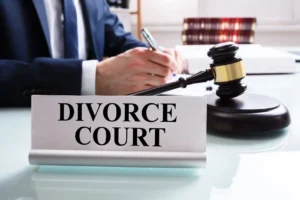Assault Charges Dismissed: Proven Defense Strategies That Work
Facing assault charges can be one of the most challenging experiences in a person’s life. The potential consequences extend far beyond the courtroom, affecting one’s reputation, career prospects, family relationships, and personal freedom. However, it is crucial to understand that an arrest for assault does not automatically lead to a conviction. With proper legal representation and effective defense strategies, many individuals have successfully had their assault charges dismissed or significantly reduced.
This article examines the various defense approaches that have proven effective in assault cases, providing insights into how defendants and their attorneys can build compelling arguments to challenge these serious allegations. Whether you’re currently facing charges or seeking to understand the legal landscape surrounding assault cases, this comprehensive guide will illuminate the path toward a favorable resolution.
Understanding Assault Charges
Before delving into defense strategies, it is essential to comprehend what constitutes assault under the law. Assault definitions vary by jurisdiction, but generally, assault involves an intentional act that creates reasonable apprehension of imminent harmful or offensive contact. Contrary to popular belief, physical contact is not always necessary for an assault charge; the mere threat of harm can be sufficient if it creates reasonable fear in the alleged victim.
Assault charges are categorized differently across jurisdictions, with distinctions typically made between simple assault and aggravated assault. Simple assault generally involves minor threats or less serious physical contact, while aggravated assault encompasses more severe circumstances, such as the use of a deadly weapon, intent to commit another crime, or assaults against protected individuals like law enforcement officers.
The severity of potential penalties corresponds to the classification of the assault charge. Simple assault might be treated as a misdemeanor, carrying penalties such as probation, fines, or short jail terms. Aggravated assault, however, is typically charged as a felony, potentially resulting in substantial prison sentences, hefty fines, and a permanent criminal record that can severely impact future employment and housing opportunities.
Immediate Steps After Being Charged
When faced with assault charges, the actions taken immediately following the arrest can significantly influence the outcome of the case. The first and most crucial step is to exercise your right to remain silent. Statements made to law enforcement without legal counsel present can be detrimental to your defense, regardless of innocence or guilt.
Securing representation from an experienced criminal defense attorney should be your top priority. A skilled lawyer will guide you through the legal process, protect your rights, and begin building your defense strategy. They will also advise you on communication boundaries, including what not to discuss with others about your case and the importance of avoiding contact with the alleged victim, which could potentially lead to additional charges.
Preserving evidence is another critical early step. This includes documenting any injuries you may have sustained, identifying potential witnesses, and collecting any video footage or other evidence that might support your version of events. Your attorney will assist in this process, potentially employing investigators to gather and preserve crucial evidence before it disappears or memories fade.
Common Defense Strategies for Assault Charges
Self-Defense Claims
One of the most frequently employed and effective defenses against assault charges is self-defense. This legal principle acknowledges that individuals have the right to protect themselves from imminent harm. To successfully argue self-defense, several elements must typically be established:
First, there must have been a reasonable belief of imminent danger. The defendant must have genuinely believed they were at risk of immediate harm. This belief is evaluated from the perspective of what a reasonable person would have perceived in the same situation, not with the benefit of hindsight.
Second, the force used must have been proportionate to the threat faced. Using excessive force beyond what was necessary for protection can undermine a self-defense claim. For example, responding to a minor shove with a weapon might be considered disproportionate.
Third, in many jurisdictions, there must be evidence that the defendant was not the initial aggressor or had clearly withdrawn from the conflict before resorting to self-defense. Some states have “stand your ground” laws that remove the duty to retreat before using force, while others require that a person attempt to retreat if safely possible before resorting to force.
Defense of Others
Similar to self-defense, the defense of others justification allows individuals to use reasonable force to protect third parties from imminent harm. The same principles generally apply: the defender must reasonably believe the third party is in danger, the force used must be proportionate to the threat, and in some jurisdictions, there may be a duty to retreat if possible.
This defense can be particularly compelling when the protected individual is vulnerable, such as a child or elderly person. However, it’s important to note that the defender’s perception of the situation must be reasonable. If they misinterpret a situation and intervene unnecessarily, the defense may not hold.
Lack of Intent
Assault typically requires intent—the prosecution must prove that the defendant intentionally caused apprehension of harmful contact. A lack of intent defense argues that the defendant did not act with the required mental state. This might apply in situations where:
The contact or threatened contact was accidental rather than deliberate. For example, if someone loses their balance and bumps into another person, this would not constitute assault due to the absence of intent.
The defendant was unaware that their actions would cause apprehension of harm. This could occur in situations where cultural differences or miscommunication led to a misunderstanding about the nature of the interaction.
The defendant lacked the capacity to form intent due to certain mental conditions. While this approach might not result in a complete dismissal, it could lead to reduced charges or alternative sentencing options focused on treatment rather than punishment.
Mistaken Identity
In some assault cases, the wrong person is accused of the crime. A mistaken identity defense challenges the prosecution’s assertion that the defendant was the person who committed the alleged assault. This defense might involve:
Establishing an alibi that places the defendant elsewhere at the time of the incident. This could be supported by witness testimony, surveillance footage, electronic records (such as cell phone location data), or other evidence demonstrating the defendant’s location.
Challenging eyewitness identification, which research has shown can be notoriously unreliable, particularly in high-stress situations or when the witness and alleged perpetrator are of different racial backgrounds.
Requesting DNA testing or other forensic evidence analysis if physical evidence was collected from the scene that could exonerate the defendant.
Consent
In certain contexts, consent can serve as a valid defense to assault charges. This defense argues that the alleged victim agreed to the physical contact that occurred. Consent is most commonly applicable in:
Sporting events, where participants consent to a certain level of physical contact inherent to the activity. For example, a tackle in football or a check in hockey, while potentially causing injury, would not constitute assault due to the implicit consent of participants.
Medical procedures, where patients provide informed consent for treatment that might otherwise be considered harmful contact.
Certain social interactions where consent to physical contact is clearly established. However, it’s important to note that consent has limits—one cannot legally consent to serious bodily harm in most jurisdictions.
Insufficient Evidence
The prosecution bears the burden of proving guilt beyond a reasonable doubt in criminal cases. An insufficient evidence defense challenges the prosecution’s ability to meet this high standard. This approach might involve:
Highlighting inconsistencies in witness testimony or the alleged victim’s account of events. Contradictions or changing stories can significantly undermine the credibility of the prosecution’s case.
Questioning the reliability or admissibility of physical evidence. This could include challenging the chain of custody for evidence or the methods used to collect and analyze it.
Demonstrating alternative explanations for the evidence presented that are consistent with the defendant’s innocence. Creating reasonable doubt is often sufficient for acquittal, even without definitively proving what actually occurred.
Advanced Defense Strategies
Challenging Procedural Errors
Law enforcement and prosecutors must adhere to strict procedural requirements throughout the investigation and prosecution process. Procedural errors can provide grounds for dismissal or suppression of evidence. Common procedural challenges include:
Fourth Amendment violations, such as illegal searches and seizures conducted without proper warrants or exceptions to the warrant requirement. Evidence obtained through such violations may be suppressed under the “fruit of the poisonous tree” doctrine.
Fifth Amendment violations, including failure to provide Miranda warnings before custodial interrogation or coercive interrogation techniques that render confessions involuntary and thus inadmissible.
Sixth Amendment violations, such as denial of the right to counsel at critical stages of the proceedings or violations of the right to a speedy trial.
Procedural challenges require detailed knowledge of criminal procedure and constitutional law, highlighting the importance of experienced legal representation.
Affirmative Defenses
Beyond challenging the prosecution’s case, defendants may present affirmative defenses that acknowledge the alleged conduct but provide legal justification or excuse. In addition to self-defense and defense of others, these might include:
Necessity defense, arguing that the defendant committed the assault to prevent a greater harm. For example, pushing someone out of the path of an oncoming vehicle might technically constitute assault but would be justified by necessity.
Duress defense, claiming that the defendant was forced to commit the assault under threat of imminent harm to themselves or others. This defense requires showing that there was no reasonable alternative to compliance with the threat.
Defense of property, which in limited circumstances may justify the use of reasonable force to protect one’s property from theft or destruction. However, the permissible level of force is typically much more restricted than for defense of persons.
Mental Health Considerations
In some cases, the defendant’s mental health status at the time of the alleged assault may provide grounds for a defense or mitigation. These approaches include:
Insanity defense, arguing that due to mental illness, the defendant either did not understand the nature and quality of their actions or did not know that what they were doing was wrong. This is a high threshold to meet and varies significantly by jurisdiction.
Diminished capacity, which, while not a complete defense in most jurisdictions, may negate the specific intent required for certain assault charges, potentially resulting in conviction of a lesser offense.
Temporary mental incapacity caused by factors such as involuntary intoxication or certain medical conditions that affected the defendant’s ability to form criminal intent.
Mental health defenses typically require expert testimony from qualified mental health professionals and thorough psychological evaluation of the defendant.
Building a Strong Defense Case
Gathering and Preserving Evidence
The foundation of any successful defense is thorough evidence collection. This process should begin as soon as possible after the alleged incident to prevent the loss or deterioration of crucial evidence. Key aspects include:
Identifying and interviewing witnesses while their memories are fresh. Witness accounts can provide alternative perspectives on what occurred and potentially contradict the prosecution’s narrative.
Securing surveillance footage from the location of the alleged assault and surrounding areas. In today’s environment, many incidents are captured on security cameras, doorbell cameras, or bystanders’ cell phones.
Documenting the scene through photographs and detailed notes, paying particular attention to environmental factors that might have influenced perception or behavior, such as lighting conditions or physical obstacles.
Collecting medical records if injuries are alleged, both to understand the nature and extent of any injuries and potentially to identify inconsistencies between the medical evidence and the alleged victim’s account.
Working with Expert Witnesses
In complex assault cases, expert witnesses can provide specialized knowledge that helps contextualize evidence or explain technical aspects of the case. Potentially valuable experts include:
Medical experts who can testify about the nature, cause, and timing of injuries, potentially contradicting claims about how or when injuries occurred.
Forensic experts who can analyze physical evidence such as blood spatter patterns, DNA, or fingerprints to provide insights into what actually transpired.
Psychologists or psychiatrists who can testify about mental health issues, the reliability of memory under stress, or factors affecting perception that might have influenced witness accounts.
Use-of-force experts, often former law enforcement officers, who can testify about whether the force used was reasonable under the circumstances, particularly in self-defense cases.
Negotiating with Prosecutors
While preparing for trial is essential, many assault cases are resolved through plea negotiations. Skilled defense attorneys can often secure favorable outcomes by:
Identifying weaknesses in the prosecution’s case and leveraging them to negotiate reduced charges or penalties. Prosecutors may be willing to accept a lesser plea rather than risk losing at trial.
Presenting mitigating factors that might justify leniency, such as the defendant’s lack of prior criminal history, contributions to the community, or willingness to participate in anger management or other relevant programs.
Proposing alternative resolutions such as diversion programs, which allow defendants to avoid conviction by completing specified requirements like community service, counseling, or restitution.
Negotiating dismissal of charges in exchange for civil compromise in appropriate cases, particularly for minor assaults where the alleged victim is primarily interested in compensation rather than criminal punishment.
Special Considerations in Assault Cases
Domestic Violence Allegations
Assault charges that arise in the context of domestic relationships present unique challenges and considerations. These cases often involve:
Heightened scrutiny from prosecutors and judges due to public policy concerns about domestic violence. Many jurisdictions have adopted “no-drop” policies that pursue prosecution even if the alleged victim becomes uncooperative.
Potential collateral consequences beyond criminal penalties, such as protective orders that can affect child custody, housing arrangements, and employment.
Complex interpersonal dynamics that may include false allegations motivated by divorce proceedings, custody disputes, or other family conflicts.
Defense strategies in domestic violence cases must be particularly sensitive to these factors while still vigorously advocating for the defendant’s rights and interests.
Assault Against Special Victims
Charges involving alleged assaults against certain categories of victims, such as law enforcement officers, healthcare workers, or vulnerable populations like children or the elderly, often carry enhanced penalties and require specialized defense approaches. These cases may involve:
Challenging the victim’s special status if it’s not clearly established. For example, if an officer was not in uniform or did not identify themselves as law enforcement, this might affect the applicability of enhanced penalties.
Addressing potential bias in the investigation or prosecution due to the victim’s status. There may be an institutional presumption of credibility afforded to certain victims that needs to be objectively evaluated.
Navigating heightened public and media scrutiny that often accompanies these cases, which can create additional challenges for mounting an effective defense.
Juvenile Defendants
When the person accused of assault is a juvenile, the legal proceedings and potential defenses take on different dimensions. Key considerations include:
The focus of juvenile justice systems on rehabilitation rather than punishment, which may open additional avenues for resolution that aren’t available in adult criminal courts.
Different standards for capacity and intent that recognize the developmental differences between juveniles and adults. The law acknowledges that young people may not fully understand the consequences of their actions or have the same ability to control impulsive behavior.
Potential for record sealing or expungement upon reaching adulthood, which can be crucial for protecting future opportunities. Defense strategies may prioritize outcomes that preserve this possibility.
Long-term Strategies for Case Dismissal
Pretrial Diversion Programs
Many jurisdictions offer pretrial diversion options that allow defendants to avoid conviction by completing specified requirements. These programs:
Typically require the defendant to admit responsibility and agree to conditions such as community service, counseling, anger management classes, or restitution to the alleged victim.
Result in dismissal of charges upon successful completion of all requirements, allowing the defendant to truthfully state they have not been convicted of the offense.
Are most commonly available to first-time offenders or those charged with less serious forms of assault, though eligibility criteria vary by jurisdiction.
Participation in diversion programs requires careful consideration, as failing to complete requirements can result in resumed prosecution with the defendant’s admission of responsibility already on record.
Motion Practice
Strategic use of pretrial motions can significantly strengthen a defense or even lead to dismissal before trial. Important motions in assault cases may include:
Motions to suppress evidence obtained through constitutional violations, potentially excluding crucial elements of the prosecution’s case.
Motions to dismiss based on insufficient evidence, procedural defects, or violations of the defendant’s rights, such as the right to a speedy trial.
Motions in limine to exclude prejudicial evidence or testimony that might unfairly influence the jury, such as prior bad acts or unreliable expert testimony.
Successful motion practice requires thorough legal research, detailed factual investigation, and persuasive written and oral advocacy skills.
Trial Strategies
When a case proceeds to trial, effective trial strategies tailored to the specific circumstances of the assault allegation become crucial. These might include:
Developing a compelling narrative that explains the evidence in a way consistent with innocence or legal justification. Jurors respond to coherent stories that make sense of the facts presented.
Effectively cross-examining the alleged victim and prosecution witnesses to highlight inconsistencies, biases, or perceptual limitations that cast doubt on their testimony.
Presenting defense witnesses and evidence in a strategic sequence that builds credibility and reinforces the defense narrative while anticipating and addressing potential prosecution counterarguments.
Delivering persuasive opening and closing statements that frame the evidence within the applicable legal standards and emphasize the prosecution’s burden to prove guilt beyond a reasonable doubt.
Post-Conviction Options
Even after a conviction, there remain potential avenues for relief from assault charges:
Appeals Process
The appeals process allows for review of legal errors that may have occurred during the trial. Grounds for appeal might include:
Improper admission or exclusion of evidence that affected the outcome of the trial. For example, if the judge allowed prejudicial evidence that should have been excluded, this might constitute reversible error.
Incorrect jury instructions that misstated the law applicable to assault or available defenses, potentially leading jurors to apply the wrong legal standards.
Prosecutorial misconduct such as improper arguments, withholding exculpatory evidence, or other actions that violated the defendant’s right to a fair trial.
Appeals focus on legal errors rather than factual determinations, so they typically do not involve re-evaluation of witness credibility or the weight of evidence.
Record Sealing and Expungement
In many jurisdictions, individuals convicted of assault may eventually become eligible for record sealing or expungement, which can mitigate the long-term consequences of a conviction. These processes:
Vary significantly by jurisdiction in terms of eligibility criteria, waiting periods, and the legal effect of the relief granted. Some states allow expungement of certain assault convictions after a waiting period with no further criminal activity.
May require demonstration of rehabilitation through employment history, community involvement, character references, or other evidence of positive life changes since the conviction.
Typically involve filing a petition with the court, possibly attending a hearing, and in some cases, providing notice to the prosecutor or victim who may have the right to object.
While not erasing the fact that a conviction occurred, these remedies can significantly reduce its impact on employment, housing, and other opportunities by limiting who can access the record and, in some cases, allowing the individual to legally deny the conviction in certain contexts.
Pardon and Clemency
In the most serious assault cases resulting in lengthy sentences, executive clemency or pardons may provide relief. These mechanisms:
Are typically granted by governors for state convictions or the President for federal convictions, representing an exercise of executive discretion rather than a legal right.
May take the form of a pardon (which forgives the offense), commutation (which reduces the sentence), or reprieve (which temporarily postpones punishment).
Generally require a formal application demonstrating exceptional circumstances, such as evidence of innocence discovered after conviction, extraordinary rehabilitation, or unusually harsh sentencing compared to similar cases.
While rare, these forms of relief can provide a final opportunity for justice when all other legal remedies have been exhausted.
Preventing Future Charges
For those who have experienced the stress and consequences of assault charges, taking proactive steps to prevent future allegations is essential:
Anger Management and Conflict Resolution
Participating in anger management programs and developing conflict resolution skills can help individuals:
Recognize triggers that lead to heightened emotions and potential confrontations, allowing for early intervention before a situation escalates.
Develop healthy coping mechanisms and de-escalation techniques that provide alternatives to physical or verbally threatening responses.
Learn effective communication strategies that reduce misunderstandings and allow for peaceful resolution of disagreements.
These skills not only reduce the risk of future assault charges but can also improve personal relationships and professional interactions.
Understanding Legal Boundaries
Developing a clear understanding of what constitutes assault in various contexts can help individuals avoid actions that might lead to charges. This includes:
Recognizing that threats, intimidating behavior, or aggressive gestures can constitute assault even without physical contact, depending on how they are perceived by others.
Understanding the legal limits of self-defense, including proportionality requirements and, in some jurisdictions, the duty to retreat when safely possible.
Being aware of enhanced penalties for assaults in particular contexts or against certain categories of victims, such as domestic partners, public servants, or vulnerable populations.
Legal education empowers individuals to make informed choices that keep their behavior well within legal boundaries.
Documentation and Witnesses
For those who have experienced false accusations in the past, developing habits of documentation and ensuring the presence of witnesses in potentially contentious situations can provide protection:
Maintaining records of interactions that might later be mischaracterized, such as saving text messages, emails, or other communications that establish the true nature of relationships or specific encounters.
When possible, having neutral third parties present during interactions with individuals who might make false allegations, particularly in contexts like child custody exchanges or business disputes where emotions can run high.
Considering the use of recording devices where legally permitted (laws on recording vary by state, with some requiring all parties’ consent and others requiring only one party’s consent).
While these measures may seem excessive in normal circumstances, they can provide crucial protection for those who have reason to be concerned about false allegations.
Conclusion
Assault charges represent a serious threat to one’s freedom, reputation, and future opportunities. However, with knowledgeable legal representation and effective defense strategies, many defendants have successfully had their charges dismissed or significantly reduced. The key to a favorable outcome lies in understanding the nature of the charges, taking immediate appropriate actions following an arrest, and working closely with experienced legal counsel to develop and implement a defense strategy tailored to the specific circumstances of the case.
Whether through challenging the prosecution’s evidence, presenting affirmative defenses such as self-defense, negotiating favorable plea agreements, or pursuing pret
Citations:
- https://attorneys.media/assault-defense-strategies/
- https://wilderfirm.com/common-defense-strategies-for-assault-charges-a-comprehensive-guide/
- https://thedefensefirm.com/can-you-get-charged-for-assault-in-a-fight-understanding-assault-laws-and-legal-consequences/
- https://mcaleerlaw.net/assault-defense-101-simple-strategies/
- https://toplawyer.law/strategies-for-defending-against-aggravated-assault-charges/
- https://www.patitucelaw.com/blog/2024/may/how-to-prepare-for-your-defense-in-an-assault-ca/
- https://www.beatonkiers.com/whats-the-difference-between-civil-vs-criminal-assault-cases/
- https://www.medlinfirm.com/blog/aggravated-assault-lawyers-employ-solid-legal-defenses/
- https://www.shanephelpslaw.com/the-atticus-files/a-legal-guide-to-defending-against-assault-charges/
- https://www.highbrowlawyer.com/top-criminal-defense-strategies-for-2024/
- https://www.lawinfo.com/resources/criminal-defense/assault/
- https://snaderlawgroup.com/aggravated-assault-defense/
- https://sddefenseattorneys.com/blog/assault-charge-defense-california/
- https://www.prisonpolicy.org/reports/winnable2025.html
- https://www.nacdl.org/Landing/Champion
- https://mitchellkilgore.com/criminal-defense-2025-protecting-your-future/
- https://www.lentolawgroup.com/assault-crimes
- https://mcaleerlaw.net/criminal-law-to-watch-in-2025/
- https://stahlesq.com/recent-criminal-defense-cases/
- https://www.legalreader.com/understanding-criminal-defense-key-strategies-in-building-a-strong-case/
- https://www.fanneylaw.com/blog/the-indispensable-role-of-an-assault-attorney-in-your-case/
- https://www.nacdl.org/Landing/NACDLReports
- https://www.dhs.gov/sites/default/files/2024-10/24_0930_ia_24-320-ia-publication-2025-hta-final-30sep24-508.pdf
- https://www.globenewswire.com/news-release/2025/03/25/3048884/0/en/From-Tyler-to-Frisco-Teakell-Law-Extends-Its-Federal-Legal-Defense-to-Tackle-Increasing-Gun-Violations-and-Alien-Smuggling-Charges.html
- https://www.lawsuit-information-center.com/roundup-lawsuit.html
- https://www.littler.com/publication-press/publication/executive-order-tracker
- https://www.theatlantic.com/politics/archive/2025/03/trump-administration-accidentally-texted-me-its-war-plans/682151/
- https://evrimagaci.org/tpg/grard-depardieu-faces-trial-for-sexual-assault-charges-295989
- https://www.defense.gov/News/News-Stories/Article/Article/4119896/securing-the-southern-border-two-months-of-decisive-action/
- https://www.wusa9.com/article/news/politics/youngkin-vetoes-bills-minimum-wage-firearms-policies-virginia/65-f11a14f1-6b1a-4d2d-9a84-8c0083fd69a3
- https://uk.finance.yahoo.com/news/best-master-class-family-violence-192100017.html
- https://www.nytimes.com/live/2025/03/19/us/trump-news
- https://militarylawcenter.com/military-law-areas-of-practice/military-assault-charges/
- https://www.findlaw.com/criminal/criminal-charges/assault-and-battery-defenses.html
- https://defenselawutah.com/criminal-defense/assault-battery-charges/assault-and-battery-in-public-places-legal-implications-and-consequences/
- https://www.mvsklaw.com/legal-defenses-to-assault-charges/
- https://www.combswaterkotte.com/2023/06/07/exploring-different-types-of-assault-charges-and-their-defenses/
- https://ajph.aphapublications.org/doi/full/10.2105/AJPH.2020.306101
- https://www.aaronmeyerlaw.com/ucmj-article-128/
- https://www.revilllawfirm.com/blog/2025/january/legal-defenses-for-those-facing-assault-charges/
- https://www.martinandreed.com/blog/5-defense-strategies-when-facing-an-assault-charge/
- https://perlmancohen.com/blog/how-a-criminal-defense-lawyer-can-help-in-assault-cases/
- https://www.nationalsecuritylawfirm.com/courts-martial-defense-military-defense-lawyers/article-120-charges/













